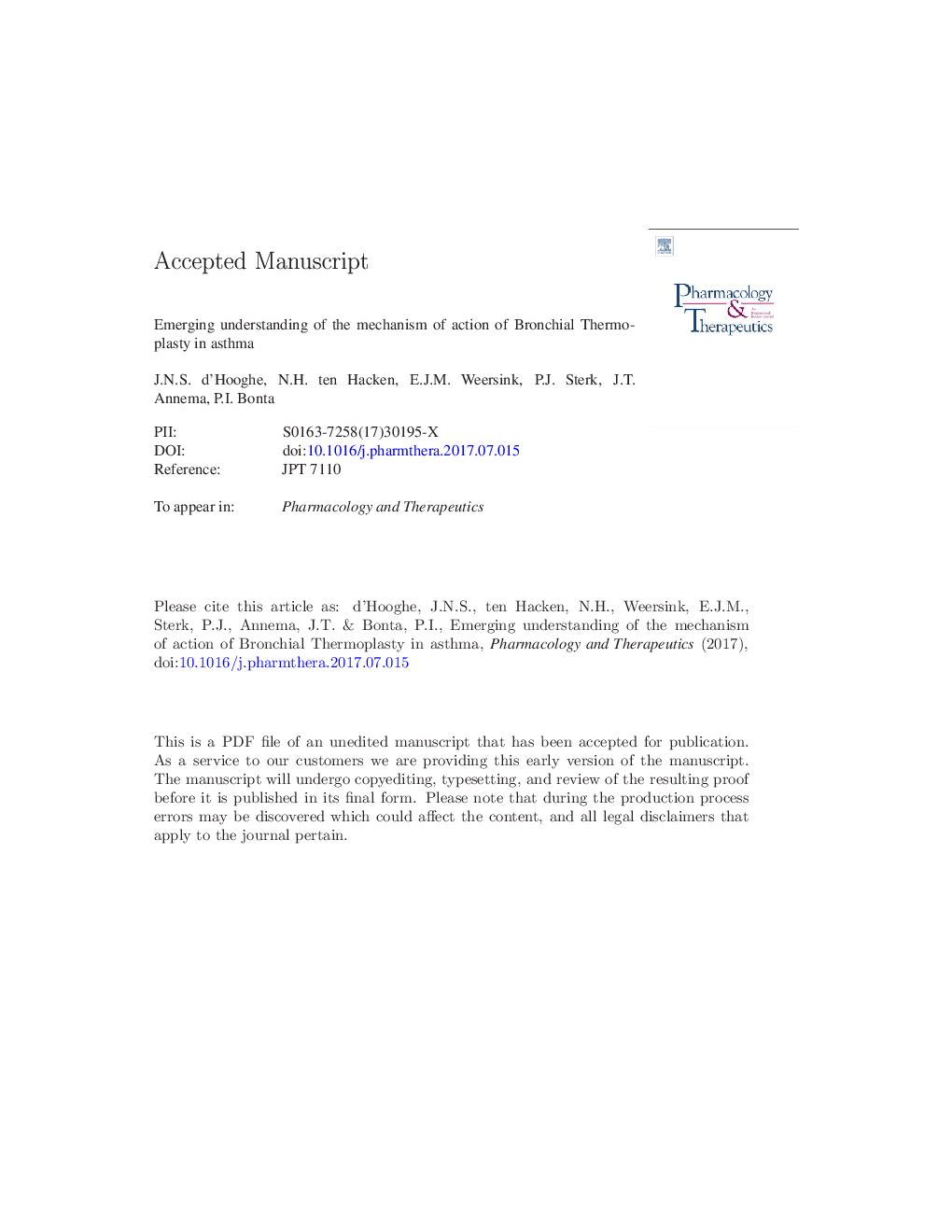| Article ID | Journal | Published Year | Pages | File Type |
|---|---|---|---|---|
| 8536975 | Pharmacology & Therapeutics | 2018 | 31 Pages |
Abstract
Bronchial Thermoplasty (BT) is an endoscopic treatment for moderate-to-severe asthma patients who are uncontrolled despite optimal medical therapy. Effectiveness of BT has been demonstrated in several randomized clinical trials. However, the asthma phenotype that benefits most of this treatment is unclear, partly because the mechanism of action is incompletely understood. BT was designed to reduce the amount of airway smooth muscle (ASM), but additional direct and indirect effects on airway pathophysiology are expected. This review will provide an overview of the different components of airway pathophysiology including remodeling, with the ASM as the key player. Current concepts in the understanding of BT clinical effectiveness with a focus on its impact on airway remodeling will be reviewed.
Keywords
RCTOCsACQTLDICSIL-17NANCTGF-ßnon-adrenergic, non-cholinergicECMReticular basement membraneIL-5PC20Regulated on activation normal T cell expressed and secretedIL-13AQLQRMLBALASMIL-4FEV1IL-6AHRTNFαrandomized control trialAsthmainflammationOctinterleukin-4Interleukin-5Interleukin-13interleukin-17interleukin-6Airway remodelingemergency departmenttransforming growth factor-betaBronchial thermoplastytumour necrosis factor αOptical coherence tomographyForced expiratory volume in 1 sright middle lobeRBMLABAGlobal Initiative for AsthmaAirway smooth musclebronchoalveolar lavageExtracellular matrixRANTESAirway innervationAirway hyperresponsivenessAsthma Control QuestionnaireAsthma Quality of Life QuestionnaireInhaled corticosteroidsoral corticosteroidsGINA
Related Topics
Health Sciences
Pharmacology, Toxicology and Pharmaceutical Science
Pharmacology
Authors
J.N.S. d'Hooghe, N.H.T. ten Hacken, E.J.M. Weersink, P.J. Sterk, J.T. Annema, P.I. Bonta,
